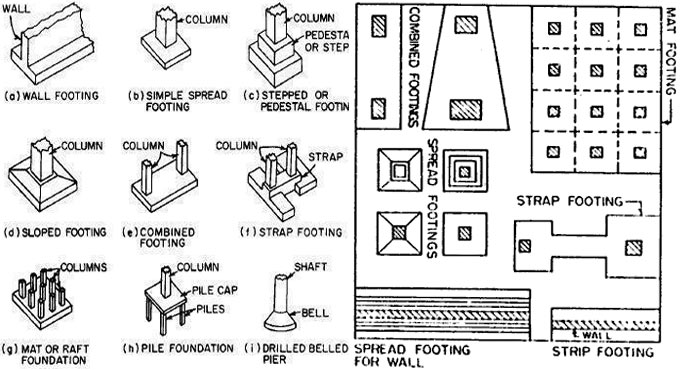NEWS | SOFTWARE | SHEET
Types of Foundations in Building Construction
Spread Footing
It is connected with base (foundation). It indicates the support for a base (foundation) consisting of an ampler base that assists expanding the structure mass across a greater region.
The structure mass is spread consistently over the complete structure footprint in contrast with a sole contact point in the base (foundation). Spread footings are commonly recognized on residential structures because of the minimal disintegrate possibility.
Spread footings can reduce general cracking that occurs as time progresses in cellars when the structure is built. Spread footing in a base (foundation) assists to build a cellar comfortably as the spread footing contains the complete periphery of the structure.
Wall Footing
A wall footing, also known as strip footing, relates to a reinforced concrete strip that is extensive (expansive) in contrast to the wall it upholds and assists to expand the supporting wall weight over a ground region. It contains the surface (shallow) foundation components.
Pedestal or Stepped Footing
When constructional (structural) steel functions are connected to the base (foundation), pedestals are generally set to support loads from metal posts through the base part (facade) to the footings which are positioned beneath the base part (facade).
The purpose for arrangement of pedestals is to hold off from the straight association of metal posts with ground which could cause probable metal corrosion. The ground nearby the pedestals should be accurately condensed to manage ample lateral strength to avert bending of pedestals.
Spread footings expand the spread over column load or wall load across a greater region.
General base (foundation) sorts for structures.
Combined Footing
A combined footing commonly upholds 2 posts (columns). In case there’s a wall or barrier at or near the boundary of an external post (column), a footing is placed differently beneath this support and it is be probable to gradient. External footing changing is ceased by assisting the 2 supports on a universal footing.
The utilization of combined footing is helpful while the length between posts (columns) is fine and the stability of an external remote footing is set. With the objective to form the ground enduring pressure alike, the combined footing is dimensioned. In order to do this, the footing form is at times rectangular or trapezoidal, depending on the loads. A combined footing is commonly computed like a beam in the linear (longitudinal) way and like a footing in the diagonal direction.
Combined footing is ideal for footings assisting braced frames (interim rise at one point) and for extraordinarily loaded footings which must comprise partially-consistent soil loading arrangements.
Graded Footing
Sloped footing indicates a footing possessing inclining part (side) or top surfaces. The graded footing is helpful in setting formation. With the objective to utilize a graded footing, a concrete beam can be formed and afterwards change the balance for every point to administer gradient.


